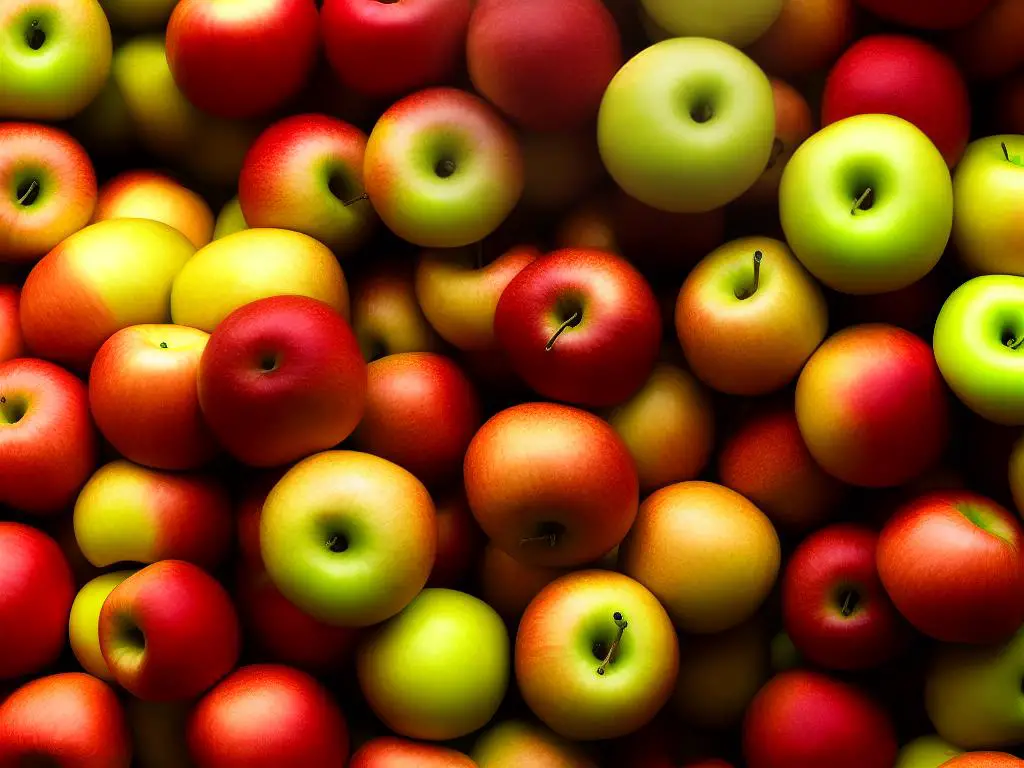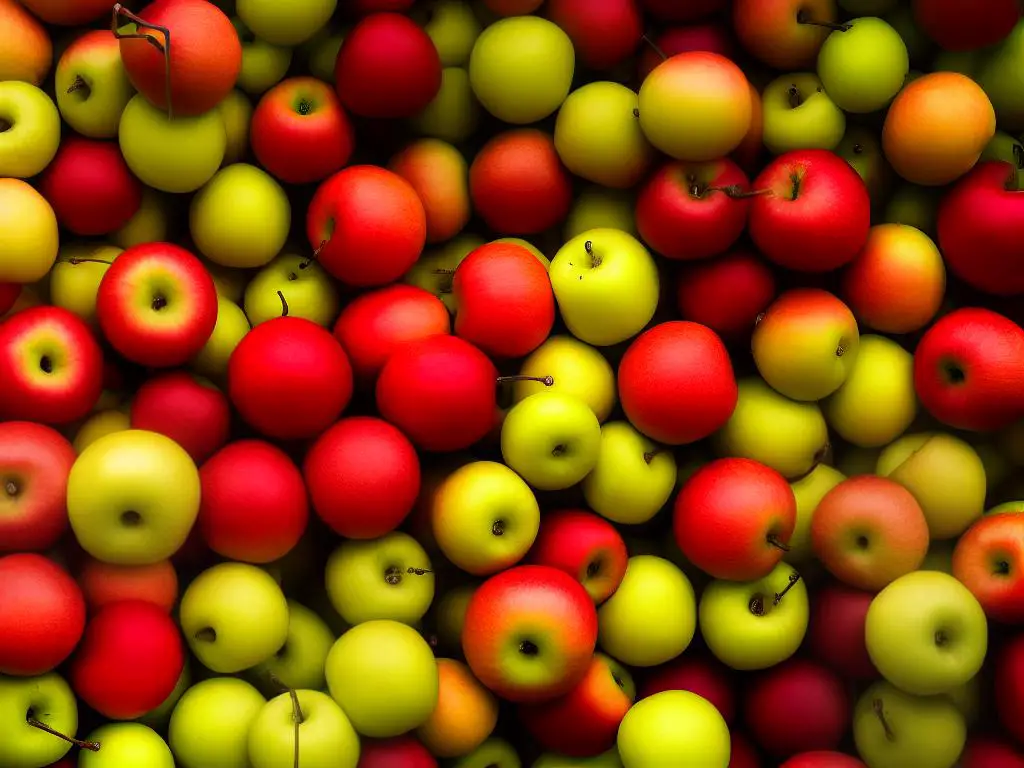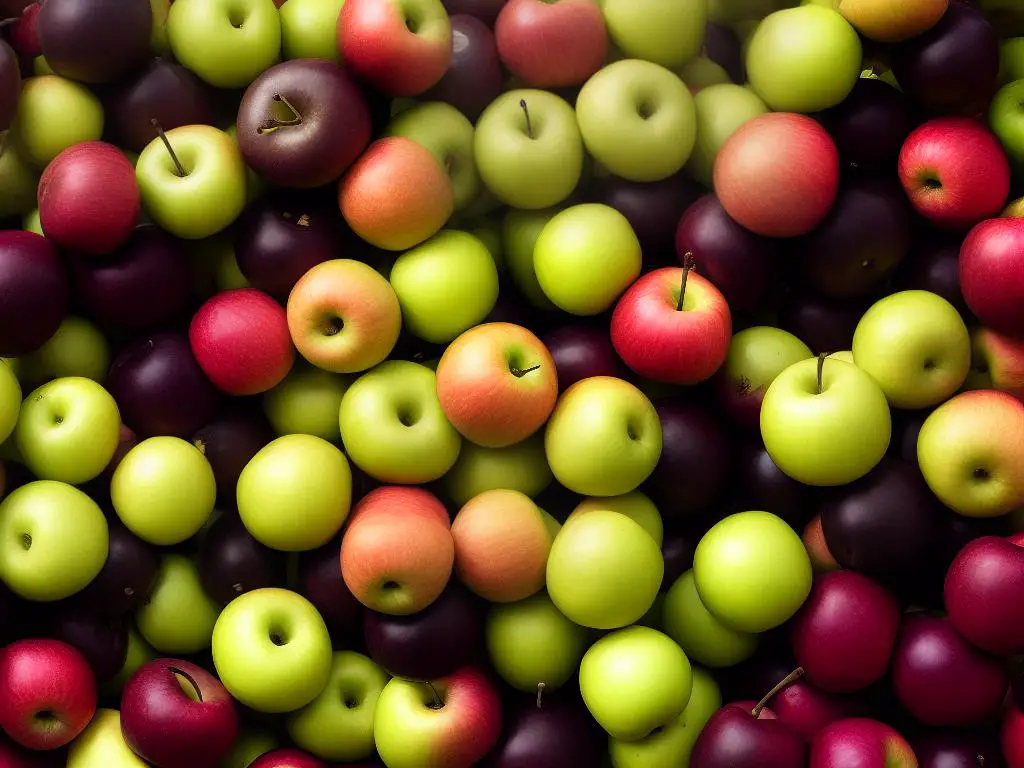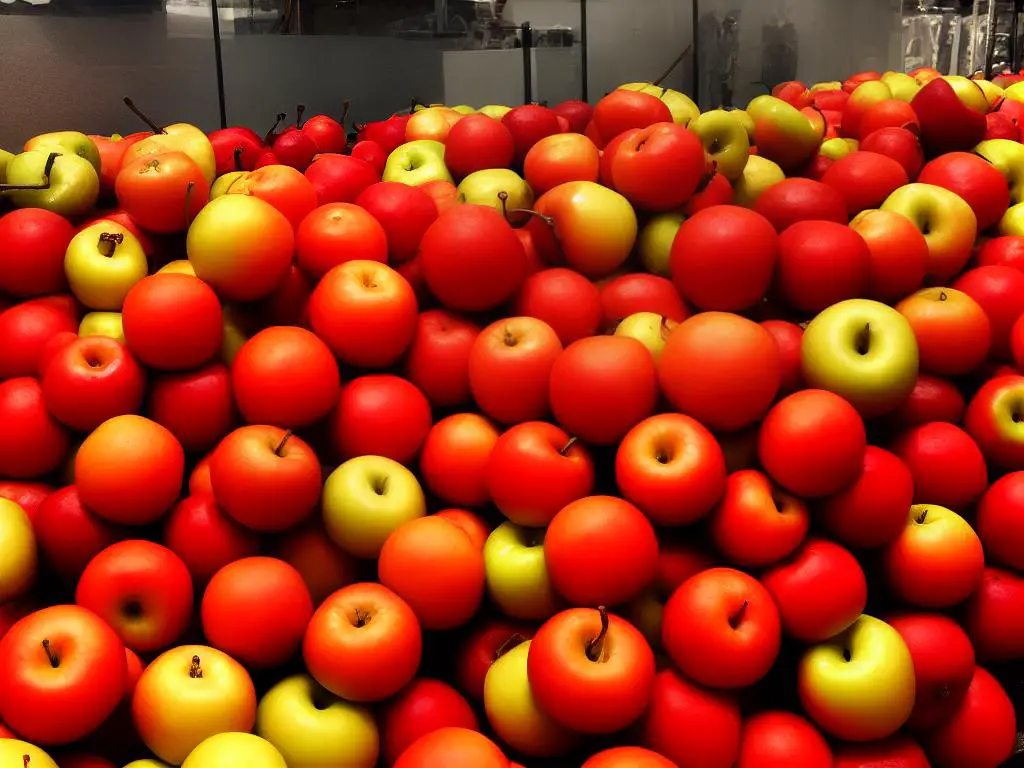Exploring the delightful world of apples, we delve into the captivating story of the Koru apple, an intriguing variety that has won over many hearts with its unique taste and texture. Born of chance and nurtured with meticulous varietal cultivation, the Koru apple, or Plumac, as it’s often called, has a rich history and origin story worth delving into. Journey with us as we embark on the educational exploration of this remarkable fruit. We will explore its history and origins, gaining insights into its initial discovery and the path it took to become one of the world’s beloved apple kinds. Furthermore, let’s immerse ourselves in understanding the cultivation and production process of Koru apples, the hard work, and expert horticultural skills invested in ensuring a bountiful, quality harvest. We will take a closer look at the distinctive characteristics and taste profile of Koru apples, as well as their nutritional values and wide-ranging culinary uses.
Origins and History of Koru Apples
Origins of Koru Apples
Koru Apples were accidentally discovered in the early 1990s when an apple was dropped into a bag of discarded fruit in Nelson, New Zealand. This rogue apple tree eventually sprouted and produced a unique apple that combined the characteristics of its parent varieties – Braeburn and Fuji apples.
The distinct apple was named ‘Koru’, a Maori word representing strength, growth, peace, and new life. This was fitting considering its New Zealand roots and the unique journey it had gone through to be ‘born’. “Plumac” is derived from Braeburn (PLU code 4103) and Fuji (MAC), the parent varieties.
Journey of Koru Apples
The Koru Apple first flourished under the nurturing care of Geoff Plunkett, who recognized the potential in this apple variety. Under his observation, he ensured the apple variety was monitored and propagated correctly. The Koru Apple’s journey was not just confined to geographical locations, traveling from New Zealand to New York, but also a journey of growth from one tree to mass production.
Once the commercial viability of the apple was established, it made its way to the United States. In Washington State, it was grown extensively for its firm texture, sweet taste, and exceptional storage characteristics.
Share in the Apple Market
After years of testing and development, the Koru Apple was finally introduced to the mainstream market in North America in the mid-2000s. The distinctive crisp and juicy texture, along with its sweet-tart flavor, quickly made it a favorite among apple lovers.
Koru Apples have a unique reddish-orange skin with yellow undertones. The apple’s distinct color, making it instantly recognizable, has been a significant contributing factor to its success in the apple market.
Over time, the production of Koru Apples has significantly increased due to its popularity. Currently, Koru apple orchards are spread throughout New Zealand and Washington State in the United States.
Beyond eating them as is, Koru Apples have also made their mark in various recipes. Moreover, their ability to resist oxidation (browning) makes them perfect for salads, fruit trays, and other applications where appearance matters.
Examining the Future of Koru Apples
If you’re looking for a unique apple flavor, the Koru Apple has plenty to offer. With its distinct characteristics and rich history, this fruit is paving its way through the competitive apple industry. As consumers become more acquainted with its intriguing story and enjoy its remarkable sweet-tart flavor, the Koru Apple is fast becoming a popular choice for apple lovers worldwide.

Cultivation and Production of Koru Apples
An Inside Look at Koru (Plumac) Apples: A Unique Hybrid
Also known as Plumac, the Koru apple is an exciting breed – a fusion of Braeburn and Fuji apples. Born in the lush landscapes of New Zealand, this new addition to the apple family is now also flourishing in orchards across the United States. As a consequence of this successful cultivation and production, Koru apples are making their mark in the world of fruits.
Preferred Growing Conditions
Koru apples flourish in temperate climates with a consistent and adequate amount of rainfall. Similar to other apple varieties, Koru apples rely on the shift from winter cold to spring warmth to stimulate flowering and subsequent fruit set. Yet, the Koru apple has the added advantage of being a biennial fruit. This means that it tends to produce a robust crop every other year, making it less labor-intensive over time.
Good drainage is essential, and hence loam or sandy loam soils are preferred for Koru apple plantation to prevent root diseases. The soil should be moderately fertile, with a pH about 6.0 – 7.0.
Common Pests, Diseases, and Prevention Methods
Even though Koru apples are generally resilient, they’re still vulnerable to common apple diseases and pests. These include apple scab, fire blight, and aphids. Regular proactive measures include the use of appropriate fungicides to control apple scab and fire blight, and insecticides to manage aphids.
Other diseases, such as the sooty blotch or flyspeck and fruit rots, can be prevented by maintaining good airflow through regular pruning and by removing any fallen or rotten fruits to reduce infection sources.
Harvesting and Quality Production
Koru apples are typically harvested in the fall, anywhere from late September to early November. Fruits are handpicked, ensuring they are of optimal ripeness and without blemish. Since Koru apples mature at varying times, multiple pickings are required over several weeks.
Harvesting at the correct time is crucial for high-quality production. A mature Koru apple should be fully colored, usually bright red on a yellow background.
The cultivation of Koru apples requires a deep understanding of nature’s cycles, and a commitment to constant vigilance over factors like weather patterns, disease, and pests. It’s a laborious process, yet the payoff is undeniably worthwhile. The resulting fruit – a juicy, crisp, and flavorful apple – is steadily making its way into the hearts and kitchens of the American populous.

Characteristics and Taste Profile of Koru Apples
An Inside Look at Koru (Plumac) Apples
The Koru (Plumac) apple may not be as instantly recognizable as the McIntosh or Granny Smith, but it’s certainly carving out its niche on the stage. Conceived in New Zealand, this distinct variety is a cross between the luscious Fuji and Braeburn apples, making for an extraordinary taste profile.
Physical Characteristics
With its strikingly bold and oblong shape, the Koru apple stands out amongst its counterparts. It’s an eye-catcher, boasting intense yellow under-tones blanketed by a warm, reddish-orange blush. The color further intensifies as the apple ripens, transforming into a deep, dark red. The skin of the Koru apple is smooth but thicker, compared to other apple varieties. The size of these apples ranges from medium to large, making them perfect for a hearty snack or baking purposes.
The core is small, leaving more room for the dense, crisp, and creamy white flesh. Koru apples have a sturdy, solid feel and a distinctive, delightfully crunchy bite.
Taste Profile
When it comes to taste, Koru apples indeed swim against the current. These apples are phenomenally juicy and offer a delicate flavor union that is both incredibly sweet yet subtly tart, creating a well-rounded taste experience.
Their initial punch is sweetness, a honeyed flavor thanks to their Fuji parentage, followed by a hint of tartness and exotic spice, a lingering memory of their Braeburn lineage. The fusion of these flavors provides an unexpected, but a pleasing balance that lingers on the palate.
Comparison to Other Apple Varieties
Koru apples, with their tropical undertones and playful flavor dance between sweetness and tartness, stand quite apart from other apple varieties. While they mirror the juiciness level of Honeycrisp apples, they veer towards the sweeter side akin to Golden Delicious. They also echo the complex flavor notes of the Braeburn apple but bring the additional weight of a distinct crispness into the mix.
This apple variety with its exciting taste profile and robust features shows its potential to stand shoulder to shoulder with classic apple varieties while carving its unique niche.
As an apple enthusiast, if you’re seeking something truly unique, then Koru apples are a must-try. They present a distinctive flavor profile, catering to a range of taste preferences. Not only do they provide a refreshing snack option, but they can also substantially augment the taste of desserts, salads and baked goods. So, during your next visit to a grocery store or farmer’s market, don’t leave without adding some Koru apples to your shopping basket and prepare to relish their exceptional taste.

Nutritional Benefits and Uses of Koru Apples
Health and Nutritional Aspects of Koru (Plumac) Apples
The bi-colored Koru (Plumac) Apples stand out with their unique lineage, being a hybrid of the British Cox’s Orange Pippin and New Zealand’s Braeburn Apples. Their bright orange-red skin envelopes a delectable, juicy, creamy white interior, providing a delicious blend of sweet and tart flavors that set them apart from other apple varieties.
Health Benefits of Koru Apples
The nutrient profile of Koru apples makes them beneficial for a variety of health and wellness goals. The fiber content in these apples aids in healthy digestion and contributes to feelings of fullness, supporting weight management goals.
Vitamin C, a potent antioxidant, is found in high quantities in Koru apples. Regular consumption can support immune function, skin health, as well as help in preventing chronic disease. Potassium supports heart health, while the trace amounts of vitamin K found in Koru Apples assist in blood clotting and maintaining bone health.
The Koru apple, like all apple varieties, contains quercetin, a plant compound that has antioxidant and anti-inflammatory effects. This compound has been associated with a lower risk of certain types of cancers and heart disease.
Uses of Koru Apples
In terms of their culinary potential, Koru apples offer a versatile taste profile that suits both sweet and savory dishes. Owing to their crispness and flavor, they can be enjoyed raw as a snack or sliced into salads. However, their robustness also makes them suitable for baking and cooking.
Koru apples can be substitutes for traditional Granny Smith apples in baking recipes, adding a unique sweet and tart twist to apple pies, pastries, and cakes. Similarly, they can be used in savory dishes for an extra hit of sweetness; try pairing them with pork or chicken for a delightful main course.
Additionally, Koru Apples are slow to brown, which makes them an excellent choice for fruit salads or cheese platters. Whether you’re juicing, cooking, or simply snacking, Koru Apples have a place in your kitchen.

Appreciating the beauty of the Koru, or Plumac apple, involves deep understanding of its rich history, insightful cultivation techniques, exquisite taste profiles, and abundant health benefits. Our exploration covered the comprehensive spectrum of the Koru apple’s journey, from its chance discovery to its meticulous cultivation, from its distinctive features to its varied nutritional and culinary benefits. Armed with this knowledge, it’s clear that the Koru apple stands as a testament to the wonder of nature’s diversity, the power of careful cultivation, and the rewarding taste that results from a combination of these factors. So, next time you bite into a crisp, juicy Koru apple, remember the fantastic journey it embarked upon before landing in your hand.